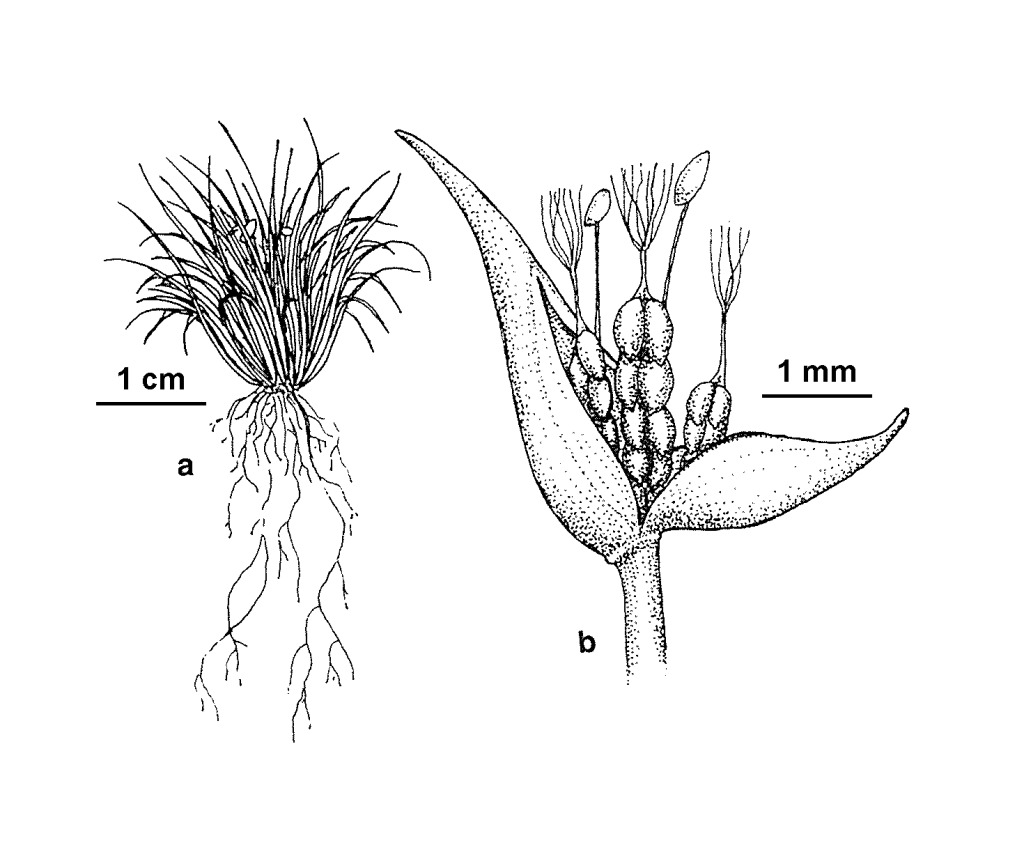Centrolepis cephaloformis subsp. cephaloformis
Cushion CentrolepisHerb forming dense, compact rounded tufts 4–25 mm diam. Leaves 3–9 mm long, ± recurved, glabrous. Inflorescence subsessile or borne on an axis up to 3 mm long, hence flowers not extended beyond leaves; bracts glabrous. Lower bract with a broad, pale, papery basal sheath 2–3 mm long, abruptly narrowed into a terete recurved lamina 2–4 mm long. Upper bract 2–3 mm long, sheathing at base, broad, pale and papery; lamina not distinct from sheath; apex acute to obtuse. Inflorescence units 3 (or rarely 2 in non-Victorian specimens) per head-like cluster. Stamens absent or 1 per inflorescence unit, not joined to axis containing carpels. Carpels 4–10 in subopposite pairs; styles 1–2 mm long, fused together for up to one-half their length. Flowers Sep.–Nov.
LoM, MuM, Wim, RobP, Gold, CVU, GGr, DunT. Also WA, SA. Occurring in damp sandy soils between and on dunes, surrounding salt lakes, and in damp gravels around old gold mines.
Cooke (1980a) recognizes 2 subspecies: C. cephaloformis subsp. cephaloformis occurs in Victoria and WA, whereas subsp. murrayi occurs in WA and SA. The latter subspecies only has 1 (very rarely 2) inflorescence units per head-like cluster.
Sometimes confused with depauperate plants of C. polygyna (see latter species for distinguishing features).
Conn, B.J. (1994). Centrolepidaceae. In: Walsh, N.G.; Entwisle, T.J., Flora of Victoria Vol. 2, Ferns and Allied Plants, Conifers and Monocotyledons, pp. 190–196. Inkata Press, Melbourne.
 Spinning
Spinning

